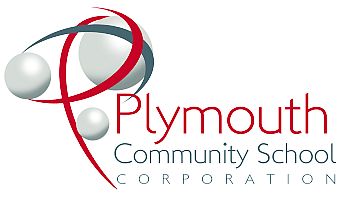 The Plymouth School Board heard the results of a facilities study that was commissioned in late 2013. Presenting the report to the Board was Dr. Ed Eiler and John Sayers of Administrator Assistance of West Lafayette, IN.
The Plymouth School Board heard the results of a facilities study that was commissioned in late 2013. Presenting the report to the Board was Dr. Ed Eiler and John Sayers of Administrator Assistance of West Lafayette, IN.
Components of the study included tours of the buildings in the corporation, meeting with administrators and staff, seven community focus groups, Board members, parents and local businessmen.
Eiler said, “It is not our role to make a recommendation. It is to provide information and the tools the community can use to assist in making a decision.” He indicated that they reviewed projected enrollment, building capacity, facility and programs considerations, building conditions, options, costs, and financing.
A part of the study looked at the history of each school building. The report included the following information concerning the first year that each building was occupied and what age each building will be in 2020: Jefferson, 1951 (69 in 2020); Menominee, 2006 (14 in 2020); Washington, 1969 (51 in 2020); Webster, 1980 (50 in 2020); Riverside, 1994 (26 in 2020); Lincoln Junior High (including additions) 1926, 1938, 1958, and 1968 (52-94); Plymouth High School, 1961 (59).
Eiler said, “Normally 50 years is about the life expectancy of a building. However, due to previous decisions to make investments in and maintain these facilities the district has been and remains in a position to extend the life of these school facilities.” He added, “That said, it should also be noted that at about 30 years after any construction project major upgrades to the facility’s infrastructure are often required.”
Sayers briefly outlined some of the long list of concerns that they heard from the community and from a committee that was formed to delve into the study. Sayers said concerns included adding pre-school; class sizes in the elementary grades, proper use of technology, balanced calendar, adding foreign language at the elementary level, safety concerns, lack of pool, lack of athletic facilities at Jefferson Elementary, odor problem at Lincoln Junior High, and addressing the need to provide effective additional assistance to students. The summary provided in the written report contained the following: “One common concern from multiple focus groups was whether curricular offerings were meeting the needs of students. Specifically, requests were made for greater emphasis on science, technology, engineering, and mathematics at the elementary level, more vocational and technical training opportunities beginning earlier than Project Lead the Way offerings, and more advanced placement and dual credit courses for high school students.”
Eiler offered a number of options for ways to prepare for capacity and enrollment needs including some options for possible building projects for the future while explaining the need for accommodating 7th and 8th grades at Lincoln Junior High , LJH building structure concerns, and the landlocked Jefferson Elementary.
Eiler said, “The district has a number of buildings which have portions of the building approaching the design life of the structure. “ “The data suggests there is no classroom capacity issue in the curent K-4 building configuration as the schools can easily accommodate the expected future enrollment. However, it must be noted the size of the cafeteria and gymnasium and in particularly the capacity of the cafeteria at Jefferson functionally limits the capacity of that school below the classroom capacity.” Eiler said.
He said they worked with Kari Vilamaa of Barton Coe and Vilamaa to provide architects’ rough cost estimate of various options. He said, “The district could undertake construction projects between zero dollars and approximately $33,000,000 in hard construction costs over the next 20 years and be able to maintain a tax rate at or below the current tax rate.” “From our conversations with stakeholders it is our belief that community has a strong perception that major investments in school facilities are not needed. Further, the patrons of the school district believe previous school board and district leadership has made a commitment not to undertake any major projects until after 2020.” Eiler said.
School Board President Todd Samuelson said, “No matter what timing, it has to be a community effort.”
Carol Anders Correspondent














